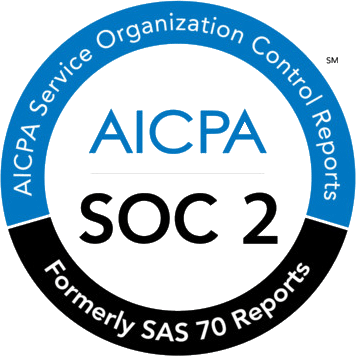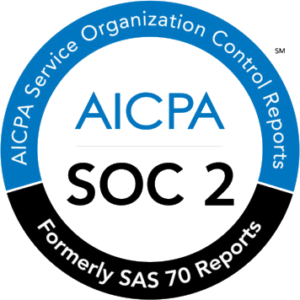Over the past couple of years, the world has changed how it does business. This is especially true when it comes to where employees are conducting their work.
We have been thrusted into a world where working outside of a traditional office is commonplace.
Of course, remote working offers benefits, such as extra flexibility for employees, as well as the reduced expenses of running an office. However, there are drawbacks, as staff can feel isolated and unconnected from their job.
Thankfully, remote working is no longer being viewed as a necessity, but rather, as an option.
A huge number of managers and business owners have come to the conclusion that they can offer the best of both worlds to their staff.
This offering is known as ‘hybrid working’.
It is a flexible arrangement wherein employees combine work in onsite (in-office) and offsite (home or another location apart from the corporate office) locations.
If you choose to offer this option, just like with any big workplace change, there are an abundance of tools that can help you with the transition.
Table of Contents
ToggleProject management software
Communication is key when it comes to hybrid working. You need to know who is working on what, and when and how that work is being delivered.
That is why project management software is key for any successful hybrid office.
Also known as team productivity software, it enables the company to track the progress of tasks and projects from a centralized program.
There are several different project management software options out there, but some of the most useful features are: project planning, task management, communication, resource management, resource tracking, project dashboards, project views, sharing of files and documents, feedback management and integrations.
The most widely-used project management software are: Asana, Basecamp, Jira, Trello and Zoho Projects.
Communication & conferencing tools
Your company probably already had an instant messaging tool pre-pandemic.
However, with remote and hybrid working, good communication tools are even more important. After all, simply walking across the office to your colleague is no longer an option if they are working from their kitchen.
Over the last couple of years, web conferencing tools also increased in popularity, as meetings and even corporate events, such as team building, training workshops and parties, were being held virtually .
Top features to look out for in a messaging app are: simple log-in, cloud storage and backup, data security and encryption, chatbots, dark and light modes, message broadcasting, push notifications, and cross-platform solutions.
Highly-rated office messenger tools are: Slack, Microsoft Teams, Google Chat, Skype and Discord.
The video conferencing features loved by users are: screen sharing, multiple webcam capabilities, Voice over Internet Protocol (VoIP) capabilities, chat features, recording, HD video (plus points if with studio / beautifying effects), and dynamic presentation features.
Top picks for video conferencing software are: Zoom, Cisco Webex, Google Meet, Intermedia AnyMeeting, and Microsoft Teams.
Desk & last mile automation software
Allocating workstations and spaces for a hybrid workforce can be a nightmare, but it needn’t be.
There are the age-old challenges of maximizing the space you have available. There are also new issues, such as planning how many members of your hybrid office are going to be on-site on any given day and where they will be working.
Thankfully, both desk booking and last mile automation software can greatly simplify this process.
Desk booking software should offer real-time reservation capabilities, Google calendar integration, HR system integration, capacity management, and directory service integration.
Some of the current favorites are: Robin Powered, Skedda, Teem, iOffice, and Office Space.
For last mile automation software, it’s best to look for the following capabilities: booking management, payment automation, parking enforcement options, access controls and reporting.
All these and more are available as part of our very own last mile automation software, here at Wayleadr.
Transform your employee parking today
Explore how Wayleadr's employee parking management can streamline your parking operations
Learn MoreBusiness process automation/ management software
Using technology to digitize repeatable, multi-step processes can save organizations a lot of time and stress in the hybrid work setup.
In the past, a big chunk of business was dependent on face-to-face interactions and the exchange of hard documents between members from different elements of the business.
With employees in different locations, automating these processes makes it possible to complete an entire process without the need for manual, in-person interaction.
Must-have features of an effective business process management (BPM) software are: visual workflow modeling, controlled user access, easy change management, software integration capabilities, enterprise framework modeling, etc.
The most popular business process automation / process software are: Zoho Creator, Kissflow, Pipefy, Zapier, and ProWorkflow.
Document sharing / management systems
The centralization of documentation storage should come with the following benefits: controlled access, easy sharing to the appropriate parties, and the assurance that everyone is on the same page (both literally and figuratively).
Having several copies of the same document flying through emails and communication platforms poses security risks for your organization. A Document Management System (DMS) can put those fears to rest.
With a DMS, you can also create folders with different levels of access and for different purposes- examples would be onboarding files, videos and documents for new employees to review; month-end reports for the review of management; official company templates; department manuals and processes; etc.
Useful features that you should look for are: document inputting via several source options, document indexing, search function, document processing, workflow automation, security, ability to store different document types and customization.
Top picks for DMS are: DocuWare, Dropbox Business, eFileCabinet, Google Drive, and Laserfiche.
Remote tech support
With employees scattered all over the country (or world) and with the number of technological tools in place, this opens a challenge for the company’s IT Department.
With this, there is a need to be able to access and run operations on devices remotely.
AnyDesk is one of the most popular remote assistance options, but there are other alternatives available now also, such as SolarWinds, Chrome Remote Desktop, and Microsoft Remote Desktop.
You should also ensure good customer service and support is available from your tech support. For instance, 24/7 help desk, tutorials and guides, are the elements you should insist upon.
These hybrid workforce solutions will make employees feel supported in this new era of work.
Not only that, but the right technology and tools will allow people to do their tasks more efficiently and lead to overall improved productivity, better business outcomes and a higher level of employee satisfaction.
These tools can help your business achieve a happy, productive and connected hybrid office.
Wayleadr can take the burden off your organizing a hybrid workplace. Find out how top companies like Alstom, Version 1 and Sanofi have triumphed with the help of our last mile automation software.
Schedule a demo with us today.












